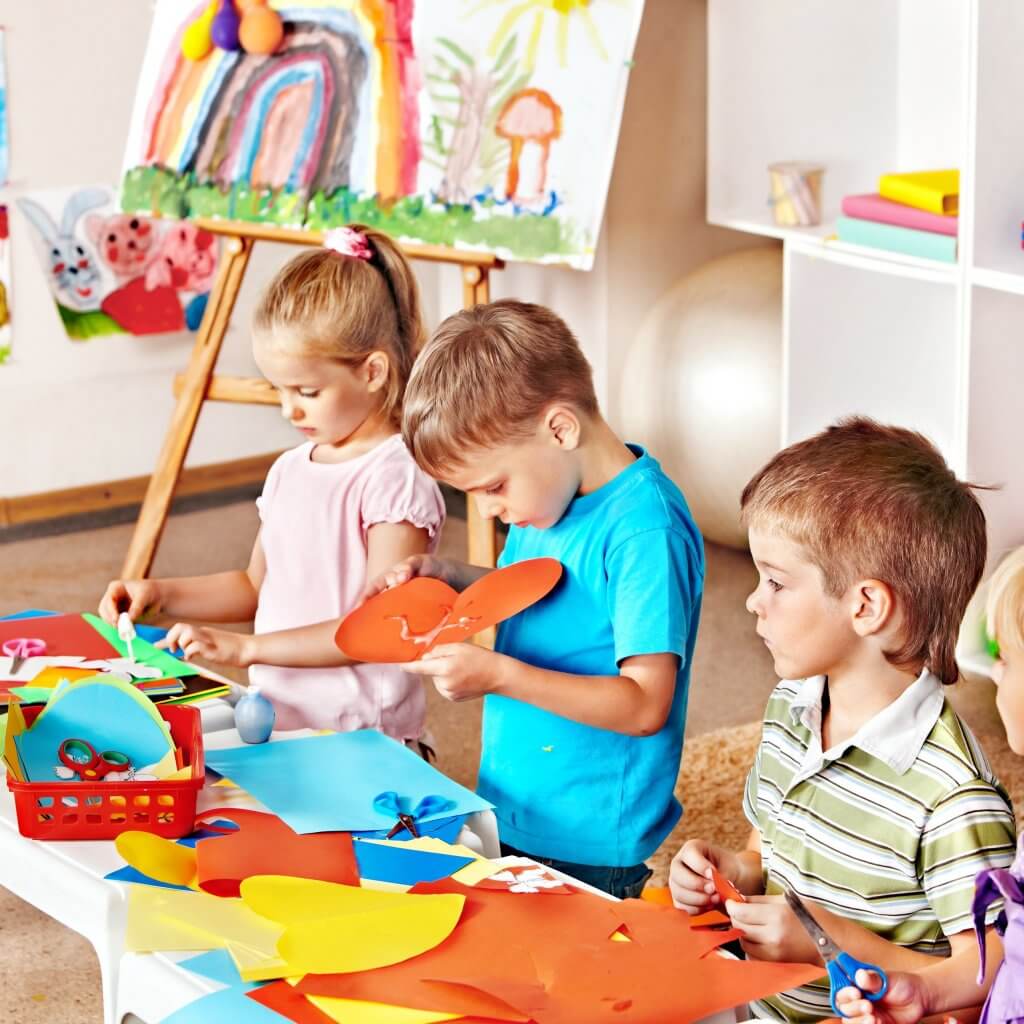What is STEM Education and How is it Important?

STEM education’s role in our education system was designed to prepare all young people to expand their minds to become leaders in our world. Students of today will have the opportunity to become inventors, teachers, researchers, and future change makers. STEM is designed to provide quality educational opportunities to students of all races and ethnicities and give them visions of what their futures can hold.
Okay, but what is STEM?

STEM is an educational curriculum based on the concept of educating students in the studies of science, technology, engineering, and math. STEM education blends all four studies into an integrated learning model based on real-world applications.
STEM stands for Science, Technology, Engineering, and Math.
Science: The definition of science is the study of the natural world.
Technology: The definition of technology includes any item made by people to meet a want or a need for the society around them. Examples of technology can include a table, pen, paint, easel, and computer hardware. Any product or item that students can create to solve a real-world problem can be viewed as technology.
Engineering: The definition of engineering is the design process students use to solve real-world problems.
Math: The definition of math is the language of shapes, quantities, and numbers and how they relate together.
This system of education provides real-life applications in the fields of science, technology, engineering, and math and provides a wider range of educational experience than only reading about a topic in a book. Students who are given the chance to explore the STEM education model are more likely to deepen their interest and grow their passion for the STEM fields and pursue a career in a field directly related to science, technology, engineering, or math.
A STEM lesson in a classroom is centered around finding a solution to a real-world problem and typically uses project-based learning style. Many STEM lessons involve building models in pretend situations. A quality lesson provides the students understanding of how the STEM education connects with real-world applications. Students who experience STEM education in real-life applications can recognize how what they are learning is related to their future.
Students often struggle with objective analysis and evaluation, finding solutions to difficult situations, and solving problems based on similar past problems. By bringing STEM learning to students, we can remedy these issues and better prepare students for success in careers after schooling is complete. STEM is described as an avenue to learning that supports students taking an active role in asking questions and solving problems.
Why is STEM important for the education system?
STEM occupations are growing more than 50% faster than other occupations. Science, technology, engineering, and mathematics careers play an important role in the growth and balance of the U.S. economy and are a crucial element in helping the U.S. succeed in the future. STEM education is creating critical thinkers and increasing knowledge about science. By incorporating STEM into our educational system, we are helping the next generation of innovators by providing a solid base of knowledge in the areas of science, technology, engineering, and math.
Elementary School
Teaching science, technology, engineering, and math in elementary school opens the doors for teachers and students to become tomorrow’s change makers. Young children with a solid foundation in STEM will go on to play an essential role in the nation’s global competitiveness and economic stability.
Middle School
STEM in middle school grades tends to explore deeper into the ideas of understanding how science, technology, engineering, and math are used in real-world applications. Some ways that students explore these topics in a classroom setting are though agriculture, architecture, design, food science, and information technology. Students who are provided STEM education are given the opportunity to explore how STEM will fit into their futures, not only after high school and college but also how their learning based on STEM education is relevant to the real-world situations they see every day.
High School
The curriculum in high school with STEM education is a blended learning process with project-based experience. Students are actively engaged in hands-on, minds-on activities where they continue to realize the applications of their STEM education can apply to experiences outside of the classroom and they are able to recognize the importance of their STEM education. Robotics, medical innovations, coding, space exploration, and biology labs are some ways high schools incorporate STEM learning in the classrooms.
It’s never too early to start bringing STEM education into your child’s life. Take your child outside and let them discover nature. Watch as they count the leaves on a tree, explore a rocky beach, or enjoy their first ferry ride. Doing these things will give your child a chance to create experiences in the natural world and learn new things about themselves, and their surroundings. Children’s minds are constantly expanding. Every opportunity you have to share the wonders of the world around them will help support their success in the future.
It is important to remember that students at a young age are extremely curious and impressionable. When we instill an interest at an early age, it can spark a lasting desire to pursue a STEM career.
STEM education for our students shows them how learning in the classroom using project-based curriculums increases their real-world knowledge. STEM education increases their confidence in the world around them.
What is a STEM job?

STEM jobs are careers that require an education in science, technology, engineering, or mathematics. Many goods and services are developing into arenas focused in fields of technology, science, and engineering. Our world has moved to a time of an overwhelm of data for businesses, not only technologically but also intellectually. Constantly consuming and analyzing data in many corporations has pushed employers to search for candidates who know their way around scientific methods.
The top paying STEM jobs are computer and information research scientist, marine architect, nuclear medicine technologist, business intelligence analyst, software developer, and engineering careers such as petroleum, nuclear, marine, chemical, or aerospace engineer.
How do we keep our position in the world when it comes to science, technology, engineering, and math?
The answer is education. STEM education is critical for today’s students because they are tomorrow’s leaders. Without quality STEM education, our country’s economic well-being is at risk. Fortunately, there is monumental opportunity for students with an interest in science, technology, engineering, and math to receive a solid education.
Today’s students are tomorrow’s leaders. Careers in STEM-related jobs are some of the fastest growing and best paid of the 21st century. It is important that the U.S. remains competitive in the fields of science, technology, engineering, and math. Some common STEM areas include aerospace engineering, biochemistry, civil engineering, computer science, robotics, and nanotechnology. Creating a solid foundation of STEM education through an expansive curriculum is a sure fire way to ensure that students in the U.S. are exposed to math, science, and technology throughout their educational careers.
In today’s non-stop world with widespread use of devices connected to the internet, students can create, consume, and share content electronically at remarkable rates. Students can build websites, create movies on their smartphones, and create interactive games on computers. Learning from textbooks is not enough anymore. Games and online learning in a community setting is on the rise in the classroom and it is supporting STEM skills for future generations.
STEM curriculums use new technologies like 3D printers to engage students and encourage interest in all of the STEM fields. 3D objects can be all different shapes and sizes. 3D products and objects are usually produced using digital model information from a 3D model or an electronic file.
Are you ready to start fostering your student’s STEM education?
Do you want your child to feel that there is a successful out-look in their future? You can start by bringing the STEM learning into the home.
By bringing STEM learning into the home you are reminding your child that you support their adventures, ideas, learning, and exploring. Children thrive when they feel that they are loved and supported by the family that surrounds them.
Some gift ideas for STEM education include science kits, rock tumblers, microscopes, robotics, magnetic blocks, walkie-talkies, cameras and camcorders, terrariums, building block kits, crystal growing kits, gadgets and electronics Labs, math dice, and binoculars.
STEM connects everything we do, whether it’s the arts, music, sports, or agriculture.
There has been controversy about changing STEM to STEAM. Adding in the Arts. It is important to remember that STEM is not exclusive to the subjects of science, engineering, technology, or math.

We must continue to engage students and encourage them to use their technical skills and education with creativity and innovation to create new machines for agriculture, new musical instruments for artists, and continue to increase our competitive edge in the U.S.
If we do not continue to build this education, all professions will suffer. STEM is at the core of everything. Using the applied, project-based way of teaching and learning allows students to understand and appreciate the importance of their work to the world around them. Remember, the software your children use to design, the instrument they play in the band, the paint and easel they use in art class – all are connected by STEM.
STEM education is a vital part of our education system. It is designed to prepare the future change makers of the U.S. to think deeply and believe that they can become innovators, educators, researchers, and leaders in our world. Give our students the vision of what the future holds and support education. Which, obviously, is very important! Read more about the importance of introducing STEM to young girls here.






